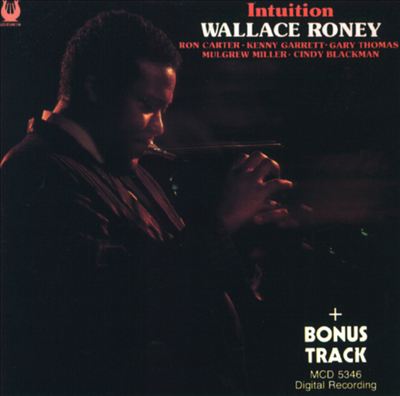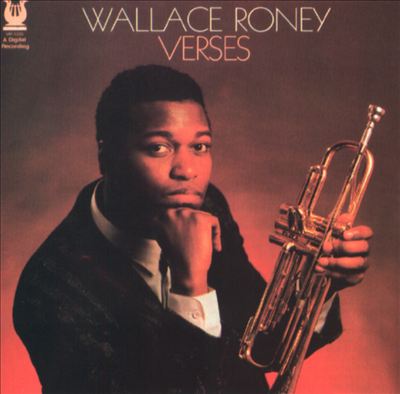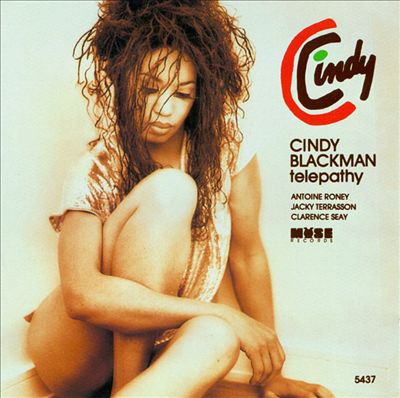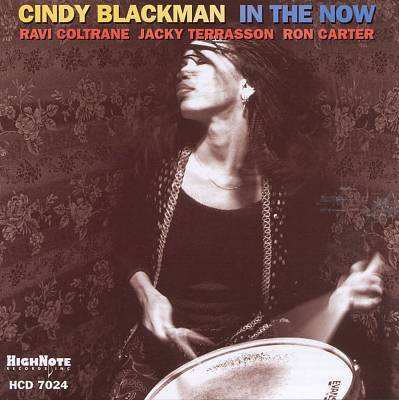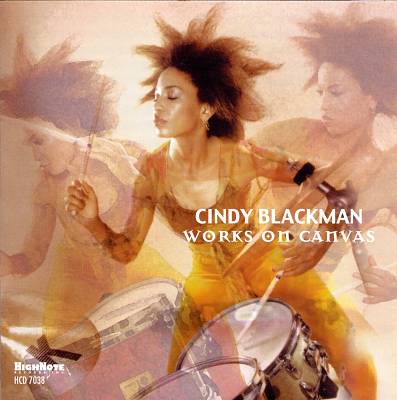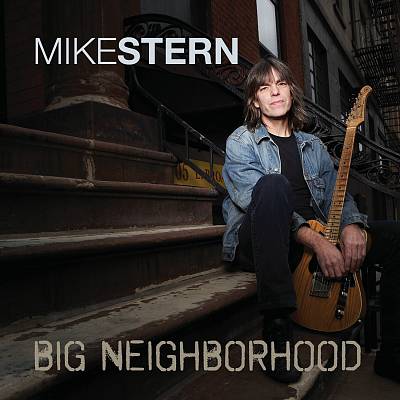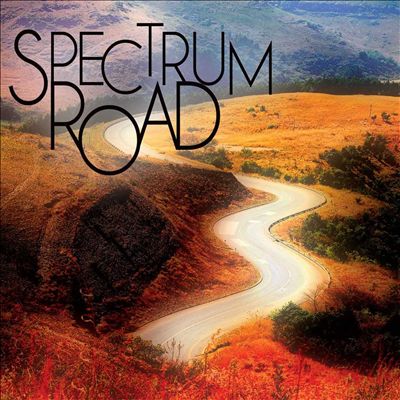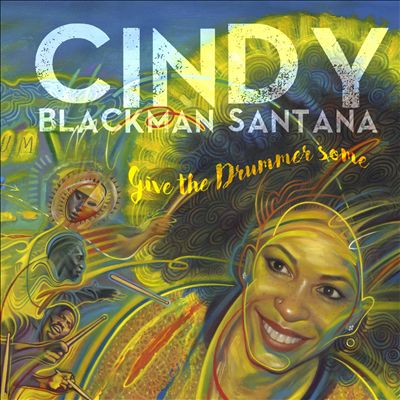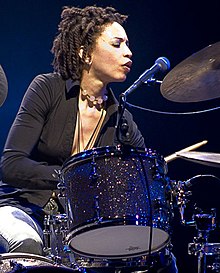AS OF JANUARY 13, 2023 FIVE HUNDRED MUSICAL ARTISTS HAVE BEEN FEATURED IN THE SOUND PROJECTIONS MAGAZINE THAT BEGAN ITS ONLINE PUBLICATION ON NOVEMBER 1, 2014.
ACCESS TO EACH ARTIST CAN BE FOUND IN THE 'BLOG ARCHIVE' (ARTISTS LISTED IN WEEKLY CHRONOLOGICAL ORDER) AND IN THE ‘LABELS’ SECTION (ARTIST NAMES, TOPICS, ETC.) ON THE RIGHT SIDE OF THE HOME PAGE. CLICK ON THESE RESPECTIVE LINKS TO ACCESS THEIR CONTENT:
https://soundprojections.blogspot.com
https://soundprojections.blogspot.com/2019/03/cindy-blackman-santana-b-november-18.html
PHOTO: CINDY BLACKMAN-SANTANA (b. November 18, 1959)
https://www.allmusic.com/artist/cindy-blackman-mn0000102398/biography
Cindy Blackman
(b. November 18, 1959)
Biography by Thom Jurek
Drummer, vocalist, and composer Cindy Blackman Santana is best known to pop music fans for her long tenure with Lenny Kravitz, and as a drummer/composer/collaborator with husband Carlos Santana. Her fluid, authoritative playing style showcases nuance, color, and soul over bombast. But Blackman Santana is also a long-established jazz musician: She has amassed more than 100 studio credits and possesses an equally long live resume. Her recording career began with Wallace Roney on 1987's Intuition for Muse. She signed a solo deal with the label and issued Arcane with Kenny Garret and Buster Williams in 1988. Blackman Santana has worked with artists ranging from Jacky Terrasson, Pharoah Sanders, and Angela Bofill to Hugh Masekela, Joss Stone, and Lucky Peterson. Her solo discography contains more than a dozen albums. In 1992, the year she joined Kravitz, she released Code Red. She was Kravitz's touring drummer and played on his video singles for "Are You Gonna Go My Way" and "American Woman." She remained with his road band for more than a decade (then returned for another year in the mid-aughts). She continued releasing jazz records as a leader, touring and doing session work while with Kravitz. She cut three acclaimed albums for HighNote, ending with 2001's Someday…. 2004's Music for the New Millennium offered an electric look at funky post-bop with saxist JD Allen and keyboardist Carlton Holmes. Her last leader date before joining the Santana band was 2010's fusion outing Another Lifetime, dedicated to her mentor and primary influence Tony Williams and his Lifetime band. Blackman Santana played with Carlos Santana for the first time in 2010; they had been dating for a few years. They married in December of that year and she formally joined his band in late 2014.
Cindy Blackman was born in Yellow Springs, Ohio in 1959, but was raised in Connecticut. She grew up in a musical household. Her mother and grandmother were classical musicians, and her uncle was a vibes player. Infatuated by rhythm from the time she could walk, she asked for drums when she was just three years old. She finally got a toy kit at seven. She studied at the Hartt School of Music in Hartford and became interested in jazz through her dad's record collection. After listening to Ed Blackwell and Billy Higgins, and Louis Hayes, she decided to pursue jazz in earnest. She got her first professional drum set at 14.
At 16 she saw Tony Williams play live and he became her role model and primary influence. Williams' use of all four limbs on the kit and his ability to work simultaneously as both time keeper and soloist, struck her as the way drummers should fit into a jazz band structure. After high school, Blackman studied at the Berklee College of Music with Alan Dawson, one of Williams' teachers. While attending Berklee a friend recommended her for a gig with the Drifters. She left school in 1982 after three semesters, and moved to New York City. For a time, Blackman supported herself as a street performer, but she also watched and learned from the many drummers she saw in clubs, including Al Foster, Billy Hart, and Jack DeJohnette. She also saw Art Blakey, who became a mentor and close friend.
In 1984, Blackman was showcased on trumpeter Ted Curson's radio program "Jazz Stars of the Future" on New York's WKCR-FM. Three years later her first compositions appeared on trumpeter Wallace Roney's Verses album and she was asked to join his band. When a Muse A&R man heard Blackman's playing in the studio with Roney, he offered her a recording contract. In 1988 she released her leader debut, Arcane. Her sidemen included Roney saxophonist Kenny Garrett, bassists Buster Williams and Clarence Seay, and pianist Larry Willis. Blackman's reputation spread, and while continuing her role in Roney's band, she began working with variety of artists on the bandstand. In 1991, she released Trio + Two, a collaboration with guitarist David Fiuczynski and bassist Santi Debriano. The "two" included conguero Jerry Gonzalez and alto saxophonist Greg Osby. In 1992 she issued Code Red for Muse. The hard-won respect she'd engendered from musicians more than made up for ignorant comments from conservative critics and clubgoers about her as a female drummer with an Afro being a bandleader. She learned to ignore these comments early, noting, "... they don't pay my mortgage." Her sidemen included pianist Kenny Barron, saxophonist Steve Coleman, and bassist Lonnie Plaxico, with Roney holding the trumpet chair.
During a bi-coastal phone conversation in 1993, Blackman got the opportunity to work with Kravitz in Los Angeles. During their chat she played drums over the phone. His response was to ask if she could fly to Los Angeles immediately. She left the next morning. Planning to stay only a few days, she ended up staying for weeks, appearing on the video for "Are You Gonna Go My Way" and joining his touring band. Given that Kravitz usually played drums on his recordings, she became his touring drummer until 2004.
During her long tenure with him, she continued to record and perform as a leader. She issued the post-bop trio offering Telepathy in 1994 with saxophonist Antoine Roney, pianist Jacky Terrasson, and bassist Clarence Seay. She composed eight of the set's 11 tracks. She joined the loose-knit Ravi Coltrane-led collective Grand Central for three albums between 1993 and 1995, including Tenor Conclave featuring saxophonist Craig Handy, pianist Billy Childs, and bassist Dwayne Burno. In 1996 she released The Oracle as a leader with sidemen Gary Bartz, Ron Carter, and Barron. She furthered her rock chops by playing on the various-artists outing Black Night: Deep Purple Tribute; Blackman contributed drums to "Smoke on the Water," "Space Truckin'," and "Stormbringer." She also appeared on Patti Labelle's Flame (credited as Cindy Blackmond) and played with veteran vanguard saxophonist Sonny Simmons on his 1997 Warner debut American Jungle alongside bassist Reggie Workman.
In 1998 Blackman signed with HighNote Records and issued In the Now with Carter, Coltrane, and Terrasson as her sidemen. The set received terrific reviews and assured her headline dates in New York and on the East Coast. She reunited with Roney in 1999 for his No Job Too Big or Small and played with Russell Gunn on Love Requiem. That same year, 32 Jazz issued a Blackman compilation entitled A Lil' Somethin', Somethin'.
In 2000, she released her second HighNote date, Works on Canvas, in 2000 with pianist/keyboardist Carlton Holmes, bassist George Mitchell, and guest tenor player JD Allen. That same year she appeared on George Benson's Absolute Benson and Eddie Allen's Summer Days. Blackman released her final (and more electric) HighNote set Someday... in 2001, using the same band, this time with Allen present throughout. It attained universally positive reviews, and the drummer was already busy working the road with Kravitz, and in the studio with Joss Stone for the star-studded Soul Sessions. She also played with Stone live and appeared on 2004's Mind, Body & Soul. Blackman left Kravitz's employ in 2004 to pursue jazz, and released the widely celebrated (and very electric) double-length Music for the New Millennium, backed by her now-standing quartet.
Between 2005 and 2010, Blackman worked in Lucky Peterson's studio and road bands, appearing on three recordings and touring the world. It was during her tenure with Peterson that she met Carlos Santana at a music festival. The pair hit it off and started dating. She also appeared on guitarist Mike Stern's Big Neighborhood in 2009. In 2010, Blackman issued her last leader outing for many years. The wildly eclectic Another Lifetime was her first tribute album to her mentor and inspiration Tony Williams. Another Lifetime featured Mike Stern and Vernon Reid on guitars and organist Doug Carn (following the exact lineup of the original Tony Williams Lifetime band). She also utilized Holmes, saxophonist Joe Lovano, and keyboardist Patrice Rushen. That summer, she sat in with Santana's band at a festival, subbing for drummer Dennis Chambers, who had a previous engagement. The guitarist proposed afterwards, and the pair married in December.
In 2012, along with Reid, John Medeski, and former Lifetime/Cream bassist and vocalist Jack Bruce, Blackman Santana cut her second Williams tribute album, Spectrum Road. She lent her voice to "Where," composed by Lifetime guitarist John McLaughlin (the tune also appeared in instrumental form on Another Lifetime). Blackman Santana appeared at the 2011 Montreux Festival, drumming for the reunion of Carlos and McLaughlin, who recorded the seminal live offering Love Devotion Surrender in 1973; she assisted in mixing the sound for its accompanying feature-length video.
In 2014, Blackman Santana joined the Santana band on two tracks of the charting Latin rock fusion outing Corazon. Its star-studded lineup included guests Wayne Shorter, Juanes, Ziggy Marley, Lila Downs, Gloria Estefan, Romeo Santos, and many more. That same year she played on Bruce's Silver Rails and on pianist Rodney Kendrick's The Colors of Rhythm. She also resumed touring with Kravitz through 2015, after which she joined the Santana band full-time.
In 2017, the Santana band and the Isley Brothers issued the collaborative outing Power of Peace. It placed well inside the front half of the Top 200 and on the R&B charts. Over the following two years her playing with the Santana band altered its signature, adding a far more intricate jazz element to their sound on recordings such as the single "Lovers from Another Time," the EP In Search of Mona Lisa, and the long-player Africa Speaks, with Spanish guest vocalist Concha Buica. Blackman Santana also contributed the cover art.
September of 2020 marked Blackman's returned as a bandleader with the wildly diverse studio outing Give the Drummer Some for Copperline, her 13th studio album. The 17-track set was recorded over three years. Narada Michael Walden produced the lion's share of tracks, while the drummer and her husband helmed the rest. The music ranged from fusion and jazz-funk to R&B, rock, and blues, to Latin and African sounds. Its all-star lineup included Carlos, McLaughlin, Metallica's Kirk Hammett, and Reid alternating on guitars. Much of the Santana band's horn section appeared among other top-flight contributors. In addition to her skills behind the kit, Blackman sang lead on ten cuts, including John Lennon's "Imagine" and the original "You Don't Want to Break My Heart."
https://www.allaboutjazz.com/musicians/cindy-blackman
Cindy Blackman

Cindy moved to New York City in the 80's and since that time, she has been seen and heard by millions of people all over the world performing with her own group and during her 11 year stint with retro funk rocker Lenny Kravitz, since 1993.
In 1998, Cindy released her first drumming instructional video entitled, "Multiplicity" through Warner Brothers publications. Cindy has been touted as "one of the hottest drummers in the business, by the Star-Gazette and is regarded as one of the top drummers in the world. She is a solid, dependable drummer who can easily move from straight-ahead jazz to rock to funk and back again.
She's upheld the backbeat and created texture for a veritable "Who's Who" in jazz: Jackie McLean, Joe Henderson, Don Pullen, Hugh Masekela, Pharaoh Sanders, Sam Rivers, Cassandra Wilson, Angela Bofill, Bill Laswell, Buckethead. In early 2000, Cindy released the latest of her several acclaimed solo albums entitled "Works on Canvas." She released her seventh solo release "Someday" in 2004.
"Some drummers act, some react. Some keep time, others create it. Cindy Blackman is among the few who can...." says Mike Zwerin of the International Herald Tribune. One listen to her latest release, Works On Canvas (featuring J.D. Allen-Tenor Saxophone, Carlton Holmes-Piano/Fender Rhodes, George Mitchell-Bass) and you'll agree.
Talking Drum said, "You can be assured that Ms. Blackman will be around for a long time to come.." She is thunder. She is fire. She is energy. She is passion. She is Cindy Blackman.
Cindy Blackman Biography

| Name: Cindy Blackman | Drums: Gretsch |
| Born: November 18, 1959 | Cymbals: Istanbul |
| Origin: Yellow Springs, Ohio | Sticks: Vic Firth |
|
|
Who Is Cindy Blackman?
Career Highlights & Musical Projects
What Can We Learn From Cindy Blackman?

BY NICOLAS GRIZZLE
PHOTOGRAPHY BY FRANCIS GEORGE
FROM DRUM! MAGAZINE’S MAY 2018 ISSUE
Through jazz, rock, and Latin music, Cindy Blackman Santana’s powerful drumming is easily identifiable on records and in person. But she’s not one to rest on her laurels. On her new album, Give The Drummer Some, the drumstress proves she’s still evolving as she not only showcases brilliant drumming on original songs and imaginative covers, but tackles a new instrument: Her voice.“I sang a song on Carlos [Santana’s] last record, Power Of Peace (2017). That’s the first time I’ve ever sung on record,” says the 50-something drummer, sitting in a conference room at Santana’s business office in the San Francisco Bay Area. “Usually I just sing in the shower, sing around my house, you know. I like melody, I like singing solos by people whose playing I love, whether it be drummers, horn players, bass players.”
It was one of her drumming idols, Tony Williams, who subconsciously coaxed her voice to the surface. She sings in snippets on Another Lifetime, her 2010 tribute featuring original songs and covers of the iconic drummer who left an indelible mark on jazz starting at age 17 with his time in Miles Davis’ quintet. Though Williams passed away in 1997 at the age of 52, his style and presence are captured beautifully by Blackman Santana on that record and remain as fresh and modern-sounding as ever.
“There were a couple songs I would sing on my Another Lifetime tour, we were doing a tribute to Tony Williams, and so a couple songs he sang, I sang on. But I never considered myself any kind of singer or that I would do anything like that. I [only] did that because I love Tony so much,” says Blackman Santana.
“Carlos [Santana] was saying, ‘You should really sing.’ He was saying, ‘Oh, you know, Narada Michael Walden would be a great producer for you,’” she says. Walden is a superstar drummer in his own right who can be heard on records with Mahavishnu Orchestra, Jeff Beck, and many others. But he’s equally, if not more lauded for his production with such celestial voices as Aretha Franklin, Mariah Carey, Diana Ross, and Whitney Houston. One of his Grammy awards is for producing the 1994 album of the year, the soundtrack for The Bodyguard.
“At one point, Narada heard the song I did with Ronnie Isley on Power Of Peace, and he said, ‘Cindy, I want to produce you.’” She continues with a laugh, “And I said, produce me doing what?” When he said he wanted to work with Blackman Santana as a singer, it took some convincing to bring her around.
“The process was different for me, and fun, because I’ve been playing drums since I was, what, three or four? So that comes naturally for me, to play. But singing is not a natural thing for me to do in that realm,” she says. She found a vocal coach, stretched out her pipes, and got in shape, so to speak, for the recording. “[My coach] helps me with all the things that a singer needs to know, including how not to hurt yourself, which is key.”
She and Walden were working on original songs, and at one point he floated the idea of doing a cover tune. “I chose ‘Imagine’ because I love those lyrics, and I love John Lennon. And those lyrics are still so relevant today,” she says. “There’s so much negativity (in the world) and people get caught up in the negativity . . . My whole demeanor, wish, and command for myself is to put out positivity.”

Forging A Path
As a creative artist, Blackman Santana has already had success at the highest level of so many genres of music. She’s an acclaimed jazz drummer who’s recorded tributes to Tony Williams; she’s a badass rock drummer who spent years touring with Lenny Kravitz; and now she’s the drummer for legendary Latin rock group Santana, sharing a stage with her husband of eight years, Carlos.Her playing reflects her own life story in so many ways. The influence of her mentors — jazz greats like Art Blakey, Tony Williams, Wallace Roney, and so many others — is clear as a ride bell. The power of her playing, particularly reminiscent of Williams’ innovative fusion style, was a natural fit for rock, and her time with Lenny Kravitz in the ’90s cemented her status as a great crossover artist. Now begins a whole new chapter in Latin rock with Santana.
Paoli Mejias, who plays congas with Santana, agrees. “She is amazing,” he says. “[She’s] an incredible drummer. She has a lot of energy.”
“I had heard jazz prior because I used to raid my father’s record collection,” she says with a laugh. “He had Miles Davis records, he had Ahmad Jamal records, so those were my favorite records that he had and I used to sneak in and listen to those records all the time.”
Many family members, including her mother, both grandmothers, and an uncle, were professional or amateur musicians, but it was a family friend — a drummer — who got her hooked on jazz. “He played a Max Roach record for me and he wrote out a little transcription, just a couple bars,” she says. “Prior to that, I had been playing three-limb style. And when he played that and he showed me what it was, I said, ‘Whoa, oh my gosh, how do you do that?’ And he said, ‘That’s called four-way independence, that’s called coordination — that’s a four-limb style, that’s what jazz drummers do.’ I was like, I gotta get that.”
Like a message in a bottle, that one short transcription brought about a journey that nobody could have imagined. “I still have that little paper that he wrote that out on for me. It’s amazing, he drew this tree on the back of it, and on the other side he wrote out two bars — just two bars — and that set me on a whole other course.”
She started devouring every bite of jazz she could find, gorging on Art Blakey, Elvin Jones, and Roy Haynes before discovering her ultimate muse. “Then I heard Tony Williams and that just completely blew my mind. So from those moments, I was completely hooked.”

the House Of Blues in Las Vegas earlier this year.
Photo: Francis George
Learning From The Masters
Living in New York in her 20s, Blackman Santana not only met several of her idols, but played with them and their bands, went to shows with them, and flourished under their tutelage. Befriending Blakey was particularly impactful to her. “To this day, it’s one of the most amazing things that has ever happened to me,” she says.“Art used to call me his redhead friend, because he didn’t remember my name at first,” she says with a laugh, before doing a husky-voiced Art Blakey impression: “Ey, where’s my redhead friend?” [Laughs.]
The two became very close. Blakey would pass on his drumming knowledge to her, even have her rehearse his band at times. “And I would go to the gigs, and he would have me sit next to the drums, and I would watch him. And he would have me sit in,” she says. “He was like a dad to me. I called him Papa and he called me his daughter. His kids and his family, they recognized me as that, and I identified with them as that to me, because Art was like my daddy. And he still is.”
His influence is audible in her own artistry. “Art is one of our innovators who created jazz,” she says. “He created the drumming that I love for its drive, its aggressiveness, its passion, its fire, the sound of the drums, the veracity with which he hit the drums. Art made all of that happen, he created all of that.” It’s no coincidence that the way she describes Blakey’s drumming is not far from how many music critics would describe her own.
Her voice sparkles with excitement and her pace slightly quickens when she tells stories from her time in New York, hanging out with legendary jazz drummers as a young woman. Because she is such a vibrant storyteller, we’re going to let you read one in her own words, which she told with a smile that did not fade once during the entire story.
“I went to the Vanguard to see Tony Williams play. He was playing there — this was in the ’80s. And in the Vanguard — I don’t know if you’ve ever been there, to the Village Vanguard in New York — there’s a little balcony they call Drummers’ Row. And the stage is right here [points], and Drummers’ Row is right here [points]. There’s a partition here [points], so you want to get as close to this side of the stage as possible so you can see. And so, drummers were racing down there to get those spots, and I was in line to get that spot early. And I did. And I was sitting right there, watching Tony, and I don’t know who was sitting next to me; I wasn’t even paying attention — it didn’t matter. And all of a sudden, I feel somebody plop down in the seat, and it was Art Blakey. And he pushed the cat away who was there and he sat down. ‘Ey.’ And then he put his arm around my shoulder and we’re watching Tony Williams. And he starts — Tony is playing one of these tempos [taps very quickly]. Maybe he was playing blues or something, with his quintet, but it was of those fast tempos. So, Art had his hand on my shoulder, and he was tapping to where he felt it. And Tony was playing, obviously, where he felt it. So to feel those two different times happening, those two different interpretations of that happening at the same time, that blew my mind. It was incredible. Because Art was so far behind the beat, but [still] in the beat. Like, if the quarter-note is as thick as this bottle of water [holds up bottle], Tony was on this side of it, the upper end of it. He was really pushing it. Not rushing, but pushing. Art was way back here, on the back side. So, Tony was on the front side of the beat, Art was on the backside. It was incredible to feel that. It was amazing.”
So, where was she feeling the beat? “I felt it where Tony was feeling it, obviously,” she says with a laugh.
Plays Well With Others
Blackman Santana has a strong musical identity as an artist, but understands the importance of adapting her own style to fit the song. Where she feels the beat, for example, depends on the artist she’s playing with. “Every band, every musician, and every song needs a different thing, maybe,” she says. “And that’s one of the joys of music, is finding those different things. It’s very colorful. It’s like getting your crayons out and making a beautiful collage of different colors.”
A different pathway opened up in 2010, when Cindy Blackman was playing with Santana on tour. She had just finished a drum solo during the show, and Carlos turned to her and proposed, right there on stage. They married less than a year later. Now, Blackman Santana has been playing regularly with Santana since 2016, including the band’s four annual residencies at the House Of Blues in Las Vegas.
She continues to write her own music, and that, too, is evolving. Tunes recorded for her new album range from straight-ahead jazz to upbeat pop, with some rock-and-roll groove and world music flavor thrown in for good measure. “For me, it’s a very natural thing to have a feeling for the different kinds of music,” says Blackman Santana.
There’s also some experimentation that came into play. “I was on my way to the studio and I thought, I’m going to do some layering and just have some drum stuff,” she says. “I’d been listening to Tony Williams’ record Ego and I love the drum pieces he did on that. So I called [the engineers] when I was in the car, and I asked, ‘Do you guys have any percussion? I don’t care if it’s real percussion, just grab me some stuff to hit. Grab me some bottles, cans, trashcan tops, pieces of paper, pots, just grab anything that you’ve got. Wood, pieces of wood, hollow chairs, give me anything!’ [Laughs.]” They rigged up a percussion tree with both legitimate and found instruments, and the sounds wound up making their way into two tracks on the album.
Blackman Santana also invited guest musicians to add their own musical voices, including Carlos Santana and [guitarist] John McLaughlin. “Carlos’ playing is incredible,” she says. “And he really knows how to play around a vocal to make me sound better than I sound.” [Laughs.]
Other guests include Metallica guitarist Kirk Hammett and Living Colour guitarist Vernon Reid. “Those two play together. [The song is] called ‘Evolution Revolution.’ Those two are killing it,” says Blackman Santana. Neil Evans, Matt Garrison, Benny Rietveld, Bill Ortiz, and others are also featured on the album. Instrumental parts were recorded in Vegas, with vocals tracked in Walden’s studio in the San Francisco Bay Area. They recorded much more than one album’s worth of music, and Blackman Santana hinted at a “part two” that could be released down the road.
But no matter how far she branches out, or what instruments she chooses to use to express herself, jazz will always be the music that makes her heart sing the loudest.
“You take Charlie Parker, and you take 32 bars that he played of that song — one chorus today, one chorus tomorrow, one chorus from last month, and one chorus from last year, and they’re all going to be completely different and completely great,” she says. “[But] it’s the same tune. So that, to me, is what makes creative music, jazz music, improvisational music at its highest, that’s what makes it, to me, the greatest music on the planet.”
Cindy Blackman: Changing Jazz
Cindy Blackman
The Bach Dancing & Dynamite Society
Half Moon Bay, California
December 7, 2008
Jazz has been in cycles of change almost from its inception, and I see another of those changes happening now. Jazz drummer Cindy Blackman's recent performance at the Bach is a prime example of this change. Some writers refer to her style as post-bop but that's too nebulous a term to distinguish it from other modern jazz forms. Let's tell it like it is: Blackman's style is power-jazz.
From the moment that she sat down before her trap set, Blackman launched into the first tune with a surge of energy that engulfed the house with a fiery passion that is hard to find in most jazz drummers. Because there was no introduction, no naming of the tunes, Blackman slid from one piece to the next with hardly a break. Her drumming was crisp, dynamic, and delightfully edgy. She dominated the first cut that almost became a drum solo.
By the third piece, Blackman gracefully took the backseat and let her band have the limelight for a few moments. Carlton Holmes split his time between his Fender Rhodes and the house Steinway Baby Grand, while Antoine Roney, tenor sax, came through with riffs that reminded me of a mix between the soul of Coltrane and a laid back Kidd Jordon. Behind them was George Mitchell on upright bass holding the groove solidly in place but letting it breathe.
By the end of the first set, it was obvious that Blackman's drums were the principle instrument. During the break someone asked, "Aren't the drums supposed to support the other instruments and just keep time?" That's the way it tends to be, but here's where power-jazz defines itself: drums become the lead instrument of the band and the other instruments most often support the drummer as a working unit, together. Blackman directed the group with vivid hues, shifting tempos, and thoughtful dynamics. She never merely kept time but played the rhythms within it.
After the audience's standing ovation, I met with Ms. Blackman and asked her what the difference was between playing such an intimate room as the Bach and other rooms she'd played on her tour. She said, "In such a close environment the band can feel the nuances of the audience and that influences how they play. We can more easily tell that the audience is listening and enjoying the band." She added, "And we could tell that this was a sophisticated audience."

Cindy Blackman is a potpourri of contradictions. Slightly built, carefully coifed and very feminine, she is a powerful, even volcanic, drummer. A city dweller who often longs for the countryside, Blackman loves to rent a small convertible whenever she can for the sheer pleasure of driving. A world traveler, Blackman is also a homebody who loves to cook and is zealous about keeping her home clean. Deeply religious, she is a certified member of the rock world-a place not known for its piety. And her taste in music ranges from Jimi Hendrix and James Brown to Scottish fife and drum corps.
Cindy moved to Brooklyn because it is “just a little more laid back” than Manhattan, where she lived most of her professional life. “It’s a tiny bit of the country, but eventually I need three residencies: a city apartment, a country home and a beach house. I’m working on it.”
Blackman’s loft, in a former warehouse, is bare save for a giant untitled painting, a ’50s drum set-her prized possession-a Rhodes keyboard and a sophisticated audio system. “When I moved in to the loft and told my predecessor that I was a drummer and practiced daily, he told me that wasn’t a problem. He had installed a stage quality stereo system, seven huge speakers, which he played at top capacity. ‘The neighbors never complained; it was cool,’ he said. Well, he lied and I like to live in harmony so I now practice under stereo volume, which, by the way, is great discipline.
“I’m a night owl, so my day starts slowly. I take my [vitamin] concoctions, get out my juicer. I like omelets, so I prepare my breakfast, take a shower, listen to the radio and then get into my music. “
Blackman was born in Yellow Springs, Ohio, into a musical family. Her dad was a music fan, but her mom was a classical violinist who played with orchestras around the state. “Dad’s mom, in her 90s, still plays the piano,” her uncle played the vibraphone and her older sister sang in the church choir and in local bands. Cindy’s family moved to Connecticut when she was 11 and, after she finished high school, they settled in Boston, where she attended Berklee School of Music.
For the past seven years Cindy has been drummer with rocker Lenny Kravitz and she has traveled the world with his group. “Sometimes the road is hard; there is so little time.”
During her world travels, Blackman fell in love with art. “In Amsterdam, when I had a day off, I went to the Van Gogh museum. It blew my mind. The energy just jumped off the paintings.”
Currently off the road, Blackman says, “Right now I have a little time to relax and I am very happy to be in my own place, in my own country for a while. I can change my hair from time to time, see my friends, experiment with cooking meals and practice and write. On the road I’m always surrounded by people, but I often get lonely. Also, I can’t trust everybody. I am, after all, a woman.”
The Personal Files
Audio/Video System?
Krell amplifiers and preamps; B & W speakers and NBS cables; Hitachi and Sony video records; a 27-inch Hitachi TV.
Computer/Software?
Macintosh G3 laptop; AOL; language studies
Last Movie?
Man on the Moon; The Matrix
Last Book?
The Cure for All Cancer by Hulda Regehr Clark, M.D., Ph.D.
Favorite Drink?
Lemon and water and Cristal; Veuve Cliquot champagne
Watch/Jewelry?
Just lost my Gucci watch; silver Scarab ring; nose diamond
Clothing Style?
Casual (jeans) to Roberto Cavalli; Dona Karan and Gucci for accessories
Desert Island Picks?
A drum set; lots of music; a man
Cindy Blackman Santana
Cindy Blackman | |
|---|---|
 Blackman performing in Melbourne, May 2008 | |
| Background information | |
| Born | November 18, 1959 Yellow Springs, Ohio, United States |
| Genres | Jazz, latin rock |
| Occupation(s) | Musician, bandleader |
| Instrument(s) | Drums, percussion |
| Years active | 1980s–present |
| Labels | Muse, HighNote, Sacred Sounds |
| Spouse(s) | |
| Website | cindyblackmansantana |
Cindy Blackman Santana (born November 18, 1959), sometimes known as Cindy Blackman,[1] is an American jazz and rock drummer. Blackman has recorded several jazz albums as a bandleader and has performed with Pharoah Sanders, Sonny Simmons, Ron Carter, Sam Rivers, Cassandra Wilson, Angela Bofill, Buckethead, Bill Laswell, Lenny Kravitz, Joe Henderson and Joss Stone.
Biography and early career
Born November 18, 1959, in Yellow Springs, Ohio, her mother and grandmother were classical musicians and her uncle a vibist.[2] When Cindy was a child, her mother took her to classical concerts.[3]
Blackman's introduction to the drums happened at the age of seven in her hometown of Yellow Springs, Ohio. At a pool party at a friend's house she saw a drum set and began playing them. "Just looking at them struck something in my core, and it was completely right from the second I saw them", says Blackman. "And then, when I hit them, it was like, wow, that's me.".[4] Soon after, Blackman began playing in the school band and persuaded her parents to get her toy drums.[4][5]
When Blackman was 11, she moved to Bristol, Connecticut[3] and studied at the Hartt School of Music in Hartford, Connecticut.[3] Blackman began to have an interest in jazz at age 13 after listening to Max Roach and got her first professional drum set at 14.[3][6]
Blackman moved to Boston to study at the Berklee College of Music with Alan Dawson, who had also taught Tony Williams—an inspiration for Blackman.[7] While she was at Berklee a friend recommended her for a gig with The Drifters[5] so Blackman left college after three semesters and moved to New York City in 1982.[2]
While in New York, Blackman worked as a performer[8] but also attended shows to listen to masters play.[5] Art Blakey became a significant influence.[9] "He really was like a father to me. I learned a lot just watching him. I asked him a lot of questions about the drums and music – and he answered all of them.", said Blackman.[9]
In 1984, Blackman was showcased on Ted Curson's "Jazz Stars of the Future" on WKCR-FM in New York.[2] In 1987, Blackman's first compositions appeared on Wallace Roney's Verses album.[2] In 1988 Blackman released Arcane on Muse Records, her debut as a bandleader.[2] Her band included Wallace Roney on trumpet, Kenny Garrett on alto saxophone, Joe Henderson on tenor saxophone, Buster Williams and Clarence Seay on bass, and Larry Willis on piano.[2]
Work with Lenny Kravitz
In 1993, Blackman had an opportunity to work with Lenny Kravitz. From New York, Blackman talked over the phone with Kravitz in Los Angeles, and played drums for him as he listened. Kravitz immediately asked Blackman to fly out to LA. She stayed for two weeks including shooting the video for Are You Gonna Go My Way.[5] She would go on to have an 18-year run as Kravitz's touring drummer.[10]
Solo career

In the late 1990s, Blackman made her first recording with a working group. They called the album Telepathy because of the tight communication in the band.[11] Blackman and her band also recorded the instructional video Multiplicity.[12]
In 2004, Blackman took a break from touring with Lenny Kravitz to focus on her own music.[13] That year, she released Music for the New Millennium on her Sacred Sounds Label.[8] "We experiment – but it's never free. Everything is written out. I have charts for all the songs. We expand on what's there, and stretch harmonics and note choices".[8]
In September 2007, she made a tour of South America, teaching clinics in Argentina, Chile, and Brazil,[14] and on November 30, 2007, Blackman and her quartet performed at Art After 5 at the Philadelphia Museum of Art.
In 2010, she released a first tribute album to her inspiration Tony Williams. Another Lifetime featured Mike Stern on guitar and organist Doug Carn following the line-up of the original Tony Williams Lifetime. As guest musicians appear Joe Lovano, Patrice Rushen and Vernon Reid. Reid is the lead guitarist on the second Williams tribute album Spectrum Road (2012), a collaboration between Blackman, Reid, John Medeski on organ and former bassist of Lifetime and Cream Jack Bruce. Bruce also sings on three tracks of the album and Blackman lend her voice to "Where", originally written by (then Lifetime guitarist) John McLaughlin and sung by Williams (Emergency!, 1969), which already appeared on Another Lifetime in an instrumental version. She appeared at the 2011 Montreux festival, Switzerland, playing drums for husband Carlos's one-off reunion with John McLaughlin, after which she helped mix the sound for the video.
In 2020, she released a 17 track album titled Give the Drummer Some. On this album, she sings on 11 of the tracks. The album includes performances by John McLaughlin, Matthew Garrison, Vernon Reid, Kirk Hammett, Bill Ortiz, and Neal Evans.[10]
Personal life
On July 9, 2010, Carlos Santana proposed to Blackman on stage during a concert at Tinley Park, Illinois.[15] Blackman is Santana's touring drummer; he proposed immediately after her drum solo. They were married on Maui, Hawaii on December 19, 2010.[16]
Blackman attended a Baptist church during her teenage years, but became a follower of the Baháʼí Faith at the age of 18; she also started studying Kabbalah in the 2000s.[17] Blackman cultivates spirituality in her musicianship.[17] "I believe that music is so sacred that once you're playing music you are doing the work of prayer, whether you're conscious of it or not, because you have a focused intent", says Blackman.[17]
Blackman is a rarity as a female jazz percussionist.[17] "In the past, there were a lot of stigmas attached to women playing certain instruments", Blackman says. "Any woman, or anyone facing race prejudice, weight prejudice, hair prejudice ... if you let somebody stop you because of their opinions, then the only thing you're doing is hurting yourself. I don't want to give somebody that power over me."[17]
Discography
As leader
- Arcane with Wallace Roney, Joe Henderson, Kenny Garrett, Larry Willis, Buster Williams, Clarence Seay (Muse, 1987)
- Code Red with Steve Coleman, Wallace Roney, Kenny Barron, Lonnie Plaxico (Muse, 1990 [1992])
- Telepathy with Antoine Roney, Jacky Terrasson, Clarence Seay (Muse, 1992 [1994])
- The Oracle with Gary Bartz, Kenny Barron, Ron Carter (Muse, 1996)
- In the Now with Ravi Coltrane, Jacky Terrasson, Ron Carter (HighNote, 1998)
- Works on Canvas with J. D. Allen III (tenor sax), Carlton Holmes (keyboards), George Mitchell (bass) (HighNote, 1999)
- A Lil' Somethin' Somethin' – The Best of the Muse Years (compilation, 32 Jazz, 2000)
- Someday... with J. D. Allen III, Carlton Holmes, George Mitchell (HighNote, 2001)
- Music for the New Millennium with J. D. Allen III, Carlton Holmes, George Mitchell (Sacred Sound, 2004)
- Another Lifetime with Mike Stern and Doug Carn featuring guests Joe Lovano, Vernon Reid, Patrice Rushen, Benny Rietveld and David Santos (4 Q, 2010)
- Give The Drummer Some (Present Future LLC, 2020)
As co-leader or sidewoman
With Eddie Allen
- Summer Days (Enja, 2000)
With Santi Debriano and David Fiuczynski
- Trio + Two featuring Greg Osby and Jerry Gonzalez (Free Lance, 1991)
With Melinda Doolittle
- Coming Back to You (Hi Fi, 2009)
With Kali Z. Fasteau and William Parker
- An Alternative Universe (Flying Note, 2011)
With Russell Gunn
- Love Requiem (HighNote, 1999)
With The Isley Brothers and Santana
- Power of Peace (Sony Legacy, 2017)
With Rodney Kendrick
- The Colors of Rhythm (Impulse!, 2014)
With Lenny Kravitz
- 5 (Virgin, 1998)
With Greg Lewis
- Organ Monk (Greg Lewis Music, 2010)
With Carlos Martins
- Passagem (Enja, 1996)
With Wallace Roney
- Intuition (Muse, 1988)
- The Standard Bearer (Muse, 1989)
- Obsession (Muse, 1990)
With Santana
- Corazón (RCA, 2014)
- Corazón: Live From México - Live It To Believe It (RCA, 2014)
With Carlos Santana and John McLaughlin
- Live at Montreux 2011: Invitation to Illumination (DVD) (Eagle Rock, 2015)
With Saxemble
- Saxemble (Qwest, 1996)
With Sonny Simmons
- American Jungle (Qwest, 1997)
With Spectrum Road (Jack Bruce, Vernon Reid, John Medeski, Blackman Santana)
- Spectrum Road (Palmetto, 2012)
With Mike Stern
- Big Neighborhood (Heads Up, 2009)
With Joss Stone
- The Soul Sessions (S-Curve, 2003)
- Mind Body & Soul (S-Curve, 2004)
With Alicyn Yaffee
- Someone Else (Madman Junkyard / Little Green Butterfly, 2016)
With various artists
- Black Night – Deep Purple Tribute According to New York with TM Stevens, Stevie Salas, Corey Glover, Richie Kotzen (Revolver, 1997)
External links
Official website
https://cindyblackmansantana.com/

















